The Rotary Club of Saskatoon - Our History

The oldest of Saskatoon's five rotary clubs, the Rotary Club of Saskatoon has been living the motto of "Service Above Self" since 1917 as we gather to share ideas, contribute to service projects, and grow our community.

Early Beginnings
After an initial promotional visit, on July the 30th of 1917, by District Governor Jeff Lydiatt of Calgary, prominent business leaders in Saskatoon agreed to hold an organizational meeting, for the purpose of establishing a Rotary Club in the city.
This meeting was held on Tuesday, August the 14th, at 8.30 p.m. in the Council Chambers of City Hall, and the decision was made to form the Rotary Club of Saskatoon and to elect both a slate of Officers and a Board of Directors.
The club's Officers elected were:
- President, Arthur Moxon
- Vice-President, John D. Millar
- Secretary, Wm. G. Mulock
- Treasurer, R.R. Randall
- Sergeant-at-Arms, Fred M. Borland
Also elected as Directors were:
- Wm. C. Borlasse
- W.F. Herman
- H.L. Martin
- R.H. Potter
- T.A. Potter
Although a practicing lawyer, Arthur Moxon's classification was listed as 'Trust Company', reflecting his involvement on the Board of the National Trust Co. Ltd. He apparently took this classification since fellow Charter Member, Fred M. Borland, had been assigned that of 'Attorney at Law.'
It is interesting to note that the position of Sergeant-at-Arms was, at the time, apparently an elected position and an Officer of the club.
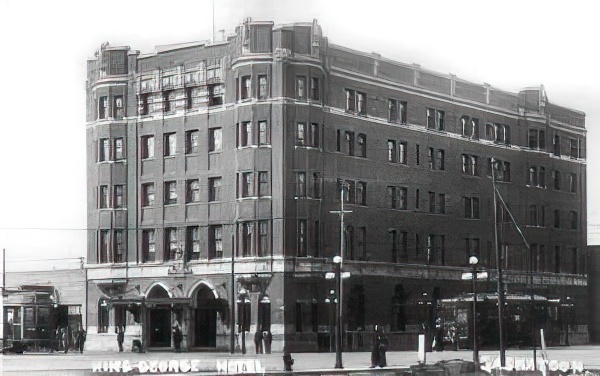
The inaugural meeting of the Rotary Club of Saskatoon took place on Thursday, August the 23rd, 1917, at the King George Hotel. Construction of this establishment had commenced in 1910 and, accordingly, had been named in honour of King George the Fifth, who had ascended the throne that same year; at the time, the hotel was considered one of the city's finest.
The meeting was attended by both the Rotary International President, Leslie E. Pidgeon of Winnipeg, and District Governor Jeff Lydiatt; District Governor Lydiatt visited the club again, a week or two later, to formally deliver the club's charter. At this first regular meeting, it was established that, henceforth, the club's weekly meeting format would be a noon luncheon, and the day of the week would be Monday: this day was proposed because it was generally recognized as 'wash day' and by inference, seemed an appropriate time to be 'out of the house'.
The R.C. of Saskatoon continued to meet in the 'Palm Room' of King George until December of 1935, when it moved to the newly constructed Bessborough Hotel; the club continued its tradition of meeting on Mondays at noon until 2020, when meetings were moved to the Saskatoon Club.
The photograph, shown above, of the hotel as it appeared at the time, was taken by Len Hilliard, a noted local photographer, who was later a long-serving member of the club.

1917 - Money Raised for the YMCA
In their first year of existence, the Rotary Club of Saskatoon assisted the Y.M.C.A. by soliciting public donations, to the tune of $6,400, for the Y's Red Triangle Fund (roughly equivalent to $80,000 in today's dollars).
The fund enabled the Y.M.C.A. to support Canada's fighting men, both at home and abroad, by providing canteen meals and accommodation.

1918 - Farming for Funds
The summer of 1918, saw the Rotary Club of Saskatoon start a farming operation in order to raise money for club projects and donations; the fundraiser was inspired by the war efforts 'Greater Production Campaign.'
About 280 acres of loaned land, just south of the city, were seeded to wheat, together with a tract of potatoes. The use of tractors and harvesting equipment was donated by farm machinery companies, including International Harvester, J.A. Case, and Massey Harris.
The wheat crop was sold for $1,989, however, the potato yield was disappointing and only realized $146 after deducting expenses of $941, the net return to the club was $1,194.
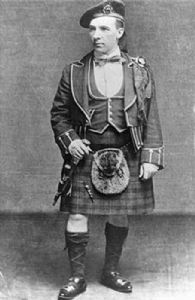
1918 - Harry Lauder Pays a Call
The famous entertainer Harry Lauder, visited the club on March 4th, 1918, a little over a year prior to being knighted. Lauder was a bona fide member of the Rotary Club of Glasgow, and addressed the club members and their ladies on the virtues of Rotary; It is not known whether he actually sang at the function although, at other Canadian clubs that he visited, he was often asked to lead the singing and was, on most occasions, pleased to do so.
While in Chicago, in 1914, Harry Lauder met Paul Harris and the two became good friends, inspiring Lauder to write a song, 'In the Rotary,' which he often performed on club visits.
Lauder had also been quick to realize the impact of Rotary in creating goodwill and understanding between countries, and was quoted as saying that 'Rotary is the golden strand in the cable of international friendship.'

1920s - Major Project: Saskatoon Children's Aid Society
Almost from its inception, the Rotary Club of Saskatoon took upon itself the task of supporting and funding the Saskatoon Children's Aid Society. The club not only raised money for the Society but also had several members volunteer their services in an advisory capacity.
In 1918, the first annual city-wide fundraising drive was held by club members in order to provide the Society with a substantial amount of its annual operating income, and by 1929, when the Province took over the funding responsibilities, $40,700 had been raised by the club for the use of the Society.
Over the years, the Rotary Club of Saskatoon would continue its support and involvement with the Society, and its direct successor Kilburn Hall.

1922 - Club Starts City-Wide Sports League
In 1922, the club undertook the organization of both Junior and Senior Rotary Baseball Leagues. Rotarians personally officiated and supervised the games, and it is recorded that the leagues were still active through the 1926 season.
It was noted, at the time, that several of the boys that had been enrolled in the junior program went on to play top-level senior ball, and in some cases became professional players.
Rotary Junior and Juvenile Rugby Leagues were established in 1924, and the club was also instrumental in forming a Public School Lacrosse League for the 1932 season.

1922 - Former club member becomes Premier of Manitoba
In July of 1922, John Bracken, a former member of the Rotary Club of Saskatoon, was appointed Premier of Manitoba, a position he was to hold for over twenty years.
From 1910-1920, Bracken was engaged as a professor of field husbandry in the College of Agriculture at the University of Saskatchewan, until he left to become President of the Manitoba Agricultural College.

1924 - Police Chief, George M. Donald, Club President.
George M. Donald joined the Rotary Club of Saskatoon in June of 1919; four years prior to becoming a Rotarian, he had been appointed as Saskatoon's second Police Chief.
Donald, a Boer War veteran and former Toronto police officer, was to serve both Rotary and the City of Saskatoon well. From 1921- 1924 he served as a director of the club and, in 1924-25, he became its fourth President, this was followed by a further additional year as a member of the Board.
He was to remain an active Rotarian, until his retirement from the Saskatoon Police Service in 1946.
On his departure from the force, Chief Donald concluded a career that encompassed 38 years of law enforcement service, 31 of those as Police Chief of Saskatoon; his term, as head of the Saskatoon force, was the longest tenure by far of a Police Chief in the history of Saskatoon.
He passed away in 1969 at 89 years of age.

1927 - First Rotary Bridge Night
On November the 23rd, 1927, a very successful men's dinner bridge event was organized by Fellowship Chairman, and original charter member, John(Jack) McKay, for the members of the Rotary Club of Saskatoon.
The gathering was held in the restaurant parlors of the Hudson Bay store at 23rd Street and 2nd Avenue; this building was built in 1911 and was owned and operated by J.F. Cairns, a long-standing club member (1917), as the J.F. Cairns Department Store, until purchased by the Hudson Bay Company in 1922.
This occasion marks the first recorded mention of an organized bridge function within the club and was the precursor of what was to become a very popular, and regular, club fellowship activity.

1928 - The Great Kiwanis-Rotary Hockey Game
Still smarting from a defeat at the sedate sport of lawn bowling by Rotarians in 1921, the Kiwanis Club of Saskatoon sought revenge by challenging the Rotary Club of Saskatoon to a hockey game in early March of 1928.
The match was apparently hotly contested and, although the exact goal tally is not known, it was reported that the Rotarians were 'on the winning end of the score.' Contemporary observers described the event as being 'one of the greatest hockey matches of the season,' and the fact that there were no obvious casualties resulting from the game was considered a bonus at the time.
As the two preeminent service clubs in the city during the 1920s, Rotarians and Kiwanians often participated together in other, less strenuous, social events such as family picnics, and even attended each other's meetings.

1929 - Club Honoured by Paul Harris visit
On Friday, March 1st, 1929, the founder of Rotary, Paul Percy Harris, visited Saskatoon. The distinguished guest was met in North Battleford by members of the Saskatoon Club, including President, Bruce J. Symes, and Dr. George Peterson, who had traveled there in the private rail car of fellow club member, and CNR General Superintendent, Benjamin T. Chappell. Harris boarded the car for the return trip to Saskatoon and, on his arrival, attended an evening banquet in his honour; the dinner was a mixed affair and included representation from all of the local service clubs.

1931 - Club Sponsors Social Aid Service
In 1931 the Rotary Club of Saskatoon, together with the Kiwanis Club and other city service clubs, agreed to help organize and fund a social service bureau in Saskatoon.
The organization, initially named the Saskatoon Family Welfare Association, was established in order to coordinate the services of the charitable, and volunteer, social assistance groups that existed at the time. The new entity's mandate was to avoid duplication and provide a more efficient way of delivering services to those in need.
With the 'Depression' in full swing, the need for such a bureau was self-evident, and the club took on the responsibility of assisting in underwriting the expenses of the Association for the first year, and, to this end, assumed a liability of $1,200. The amount was to be paid out over a two-year period, and although concerts were put on in order to attempt to raise the money, these efforts, unfortunately, fell short; however, the club met its obligations by making up this shortfall out of general revenue.
The Saskatoon Family Welfare Association was also later responsible for providing the organization and leadership for the establishment of the Community Chest ( a precursor of today's United Way), and was essentially the main source of community social assistance until the Provincial Government assumed responsibility for relief benefits in 1945.
Renamed the Saskatoon Family Service Bureau in 1961, the organization still exists today as the Family Service Bureau, a title it assumed in 2001.
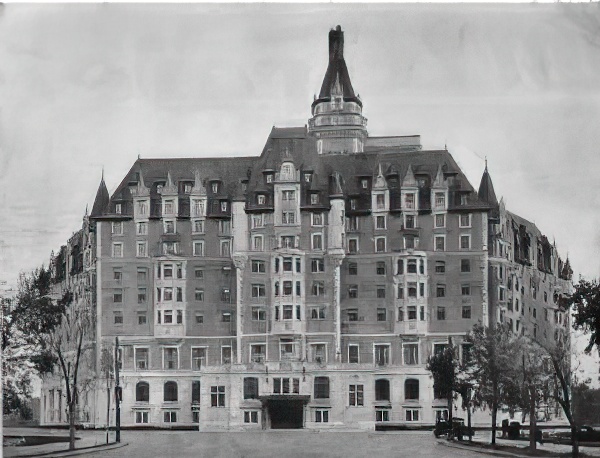
1936 - Club Moves to "New" Bessborough Hotel
In the first week of January 1936, the Rotary Club of Saskatoon changed its meeting venue.
Since the formation of the organization in 1917, the club had utilized the King George Hotel for its weekly meetings. However, with the opening of the Canadian National Railway Bessborough Hotel on December the 10th, 1935, the opportunity to move to a new 'state of the art' facility presented itself.
Construction of the Bessborough had been started in 1929, just prior to the start of the Great Depression, and was actually completed in 1932, but the opening was delayed because of the severe economic conditions at the time. The 'Bess' was actually the last of the great railway hotels built in Canada, and has remained the home of the Rotary Club of Saskatoon. That was until March 2020, when meetings were moved to the Saskatoon Club.

1939 - Wartime Fundraising
In 1939, the club set up a wartime fund for the Saskatoon Light Infantry Regiment, Machine Gun Battalion. The objective was to raise $5,000 to assist the Battalion, and this was to be obtained by producing and selling to the public, buttons sporting the Regiment's insignia for 25c a piece.
In order to get the project off the ground, an initial $500 was advanced to the fund from the club's coffers.

1949 - Rotary Annual Corn Roast
For many years, the annual Rotary Family Corn Roast, held at the Forestry Farm, was a regular feature on the club's calendar. At a time when the majority of the club members had young families, the event was always a popular occasion for all involved.
This photograph shows some of the happy participants at the 1949 event.

1950s - Rotary Supports Easter Seal's Campaign
During the 1950s, the Saskatoon Rotary Club was a strong supporter of the Easter Seal fundraising campaigns in the city, both financially and from an organizational point of view.
Here Club President, Chas. (Chuck) Hazen, presents a cheque to the Easter Seal Campaign Chair in 1953; the money contributed to the ongoing funding of the Saskatchewan Council for Crippled Children (now the Saskatchewan Abilities Council).

1961 - Rotary Club of Saskatoon Sponsors a Second City Club!
A second Rotary Club in the City of Saskatoon was established on Wednesday, May the 31st, 1961, as a result of the Rotary Club of Saskatoon's efforts and sponsorship. The newly formed Rotary Club of Saskatoon Nutana consisted of 26 members, and its charter meeting was held on the evening of Monday, June 19th, in the Adam Ballroom of the Bessborough Hotel.
Bob Forrest, President of the Rotary Club of Saskatoon, chaired the historic meeting; District Governor, Charles M. Dunn, addressed the gathering and presented the new club's charter to its inaugural President, Cliff Worden, The above photograph shows Saskatoon Club President, Bob Forrest, with club member Harry Buckwold at the charter night celebrations; all three of Harry's sons Alvin, Sid, and Seymour) are also in the photograph, with Sid and Seymour also both being members of the Rotary Club of Saskatoon.
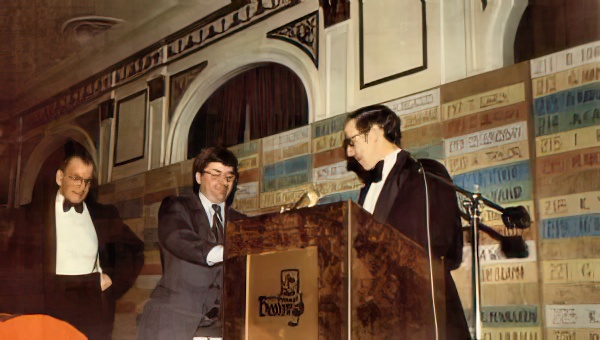
1967 - Club Begins Long-Running Plate Dinner Fundraiser
Rotarians Jack Lamb, John Brennan, and Clare Heagy at the 1983 'Plate Dinner.' The event, first held in 1967, was a popular fundraising project and was held at the Bessborough every March. The Dinner ran for close to 30 years and featured substantial cash draws for those who had purchased tickets for the evening.
Patrons had their ticket numbers and names posted on a large board; tickets were drawn throughout the evening and taken off the board, eliminating the holders from contention until only the final grand prize winner was left.
Second and third prizes were also awarded to those lucky participants who made it to the last three; in addition, every fiftieth name drawn refunded to its owner the cost of their ticket.

1970s - Club Runs Concessions for Louis Riel Days
The club was involved with CFQC's Louis Riel Day celebration throughout the 1970's and 80's; the day-long celebration featured a multi-stage relay race in which teams had to compete in running, horseback riding, and canoe paddling disciplines. Portable stages, showcasing local talent, provided free entertainment for the large crowds that attended the event.
Two refreshment tents were operated as a fundraiser by Rotarians and their wives on the river bank in Kiwanis Park, with one tent being just north of the Bessborough, and the second close to the Vimy Memorial bandstand. Club members worked in shifts, either setting up the tents and grills, cooking hamburgers and hot dogs plus serving cold drinks, or as part of the 'cleanup - takedown' crew.
The profits generated were not large ($1,500-$2,000) relative to the 'man hours' expended, however, the fellowship and camaraderie that club members experienced, made the endeavour well worth the effort.

1985 - $30,000 Raised for Polio Plus Campaign!
In the early 1980s, Rotary began planning for the most ambitious program in its history - to immunize all of the world's children against polio. The plan required collaboration with international, national, and local health agencies and took shape early in Carlos Canseco's year as RI President in 1984-85 when he appointed the Polio 2005 Committee. Dr. Canseco invited Dr. Albert Sabin, developer of the oral polio vaccine, to serve as a special consultant to the committee.
Rotary's pledge of US$120 million to fund its Polio Plus program was announced in October 1985 at the 40th anniversary of the United Nations. This ambitious commitment electrified the global public health community. Within three years, Rotarians had more than doubled their fundraising goal, donating US$247 million. The 1985/86 Rotary year, saw the five Saskatoon Rotary Clubs donate more than $90,000 to the Polio Plus campaign, with the Rotary Club of Saskatoon raising close to $30,000 of this amount.
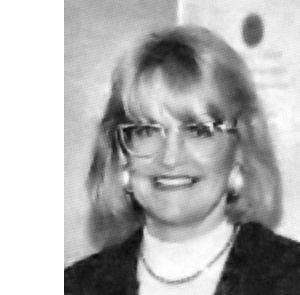
1990 - Club Welcomes First Female Member!
In 1989, Rotary International, for the first time in its history, voted to allow women to join the organization.
The Rotary Club of Saskatoon quickly moved to take advantage of this new ruling, and, in 1990, the club's first female member, Kathryn Olsvik, was inducted as a new Rotarian.

1991 - Exchange Students Visit
Four Rotary Exchange students were hosted by Club President, and Royal University Hospital Board Chairman, Bert Ayers (center), on a tour of the hospital in 1991.
The students, who hailed from Japan, Germany, Argentina, and Mexico, were accompanied on the tour by the hospital President and CEO, Tony Dagnone. Over the years, the Rotary Club of Saskatoon has been a strong supporter of Rotary International's Youth Exchange Programme, both in the role of sending, and hosting, participating students.

1992 - Club Celebrates its 75th Anniversary
On October the 7th, 1992, the Rotary Club of Saskatoon celebrated its 75th Anniversary year by welcoming Rotary International's President, Clifford L. Dochterman, as part of the festivities.
President Dochterman was transported to Rotary Park in a York Boat (owned by the R.C. of Prince Albert), where he planted a commemorative tree.

1993 - Van Donated to Saskatoon Community Health
In 1993, the Rotary Club of Saskatoon raised the money to purchase and equip a healthcare van.
The vehicle was presented to the Saskatoon Community Heath Unit and was used extensively in the health unit's drug addiction needle exchange program.

1998 - Rotary Peace Plaza
The Rotary Peace Plaza is situated on the east bank of the river in Rotary Park. It was a project of all five of the Saskatoon Rotary clubs Featuring a Peace Prayer Pole, designed by local artist Doug Bentham, and a surround of sponsored memorial bricks, the pole displays the words 'May Peace Prevail on Earth' in four languages - English, French, Cree, and Japanese, and at night features a natural gas flame on top.
When originally built in 1998, it was placed on the highest location in the park; unfortunately, the area proved unstable, and a landslide caused the structure to collapse. The Meewasin Valley Authority, and the City of Saskatoon, reconstructed the Plaza in 2001, relocating it to the main, lower area, of the park. In 2008, Saskatoon Rotarians celebrated the 10th Anniversary of the Rotary Peace Plaza, marking the occasion with a re-dedication and ceremonial relighting of the Prayer Pole.
.png)












